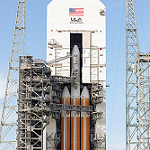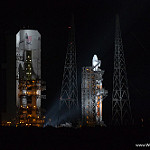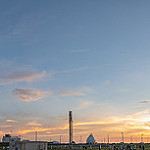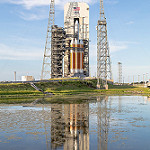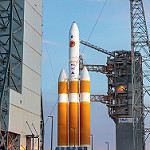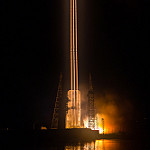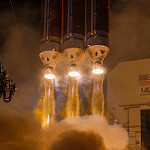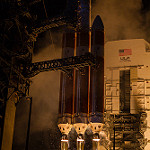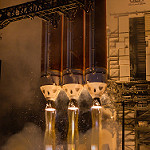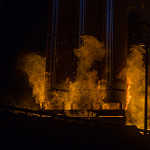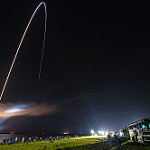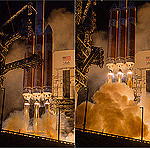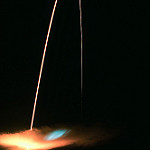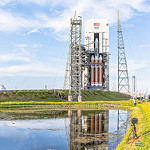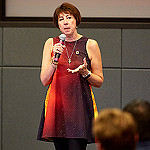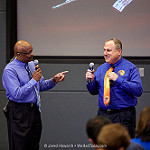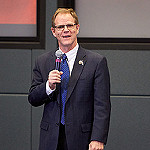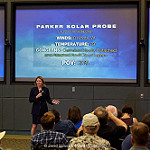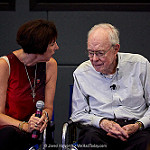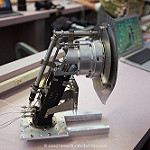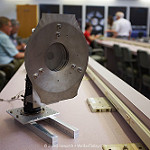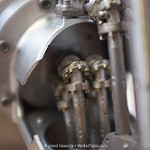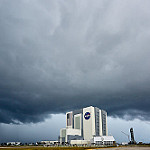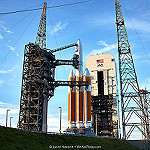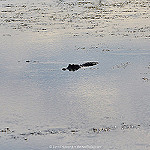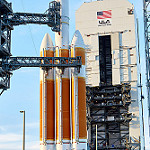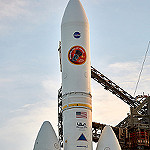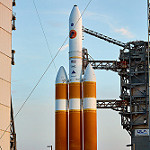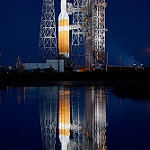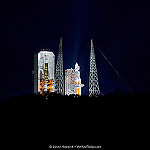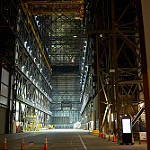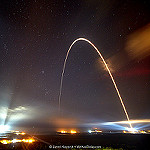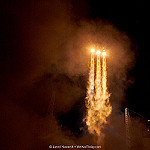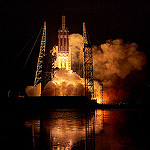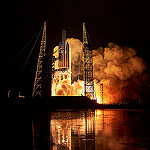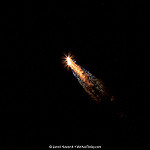NASA's Zurbuchen Praises ULA Team For Textbook Launch

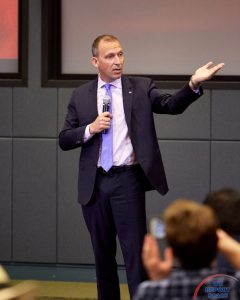
KENNEDY SPACE CENTER: Moments after the Parker Solar Probe was energy-positive, Thomas Zurbuchen, associate administrator of NASA’s Science Mission Directorate held an impromptu session with media gathered at the Kennedy Space Center Press Site.
Zurbuchen: "It was a textbook launch. When the Northrop Grumman third stage fired, we lost telemetry for a brief moment, but it came right back. This was my first time seeing a Delta IV Heavy launch. They tell you about the fire (that appears) before lift-off. You can read about the fire. But until you see the fire, you have to remind yourself that this is how it has to work."
When asked about the scrub on the first attempt on Saturday morning: "We had two problems. First, a ground communications issue. Then, at 1 minute 50 seconds, a helium pressure sensor reported low. The helium is used to equilibrate pressure. It is supposed to dip at 1 minute and 50 seconds but it dipped further than we expected. It hit the red line and we were out of time to bring it back up.
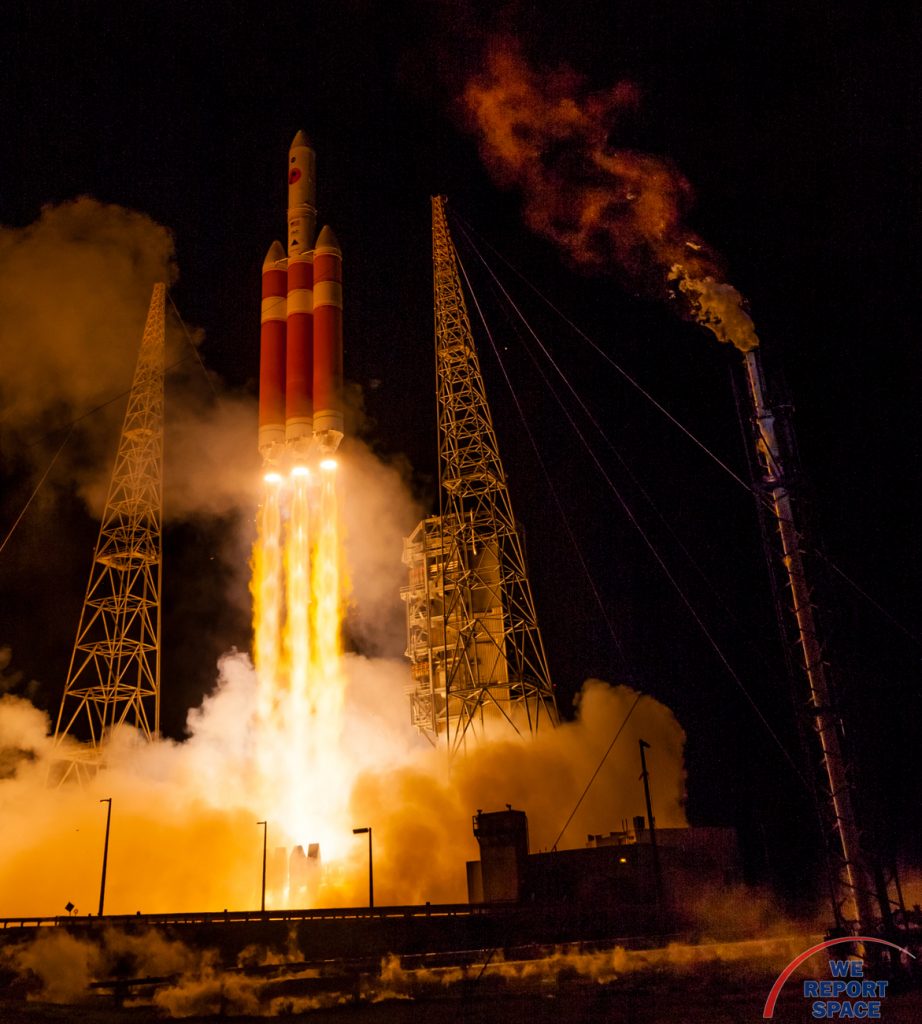
"What the team did is exactly the right thing. 100% the right thing. I saw a ULA guy a coffee this morning and he basically apologized for the scrub. I said, 'Never apologize for being safe with the spacecraft. At the scrub, I did not have a single negative thought. My only thought was let's try again tomorrow."
Later, Zurburchen was asked how he felt to be part of this mission. "It is absolutely clear that the credit belongs to the team that did the work. I feel really humbled to be a part of it. I am grateful for the team. It is the team that deserves the credit. All the way down to the engineers who did these subtle engineering feats that make a mission a success."
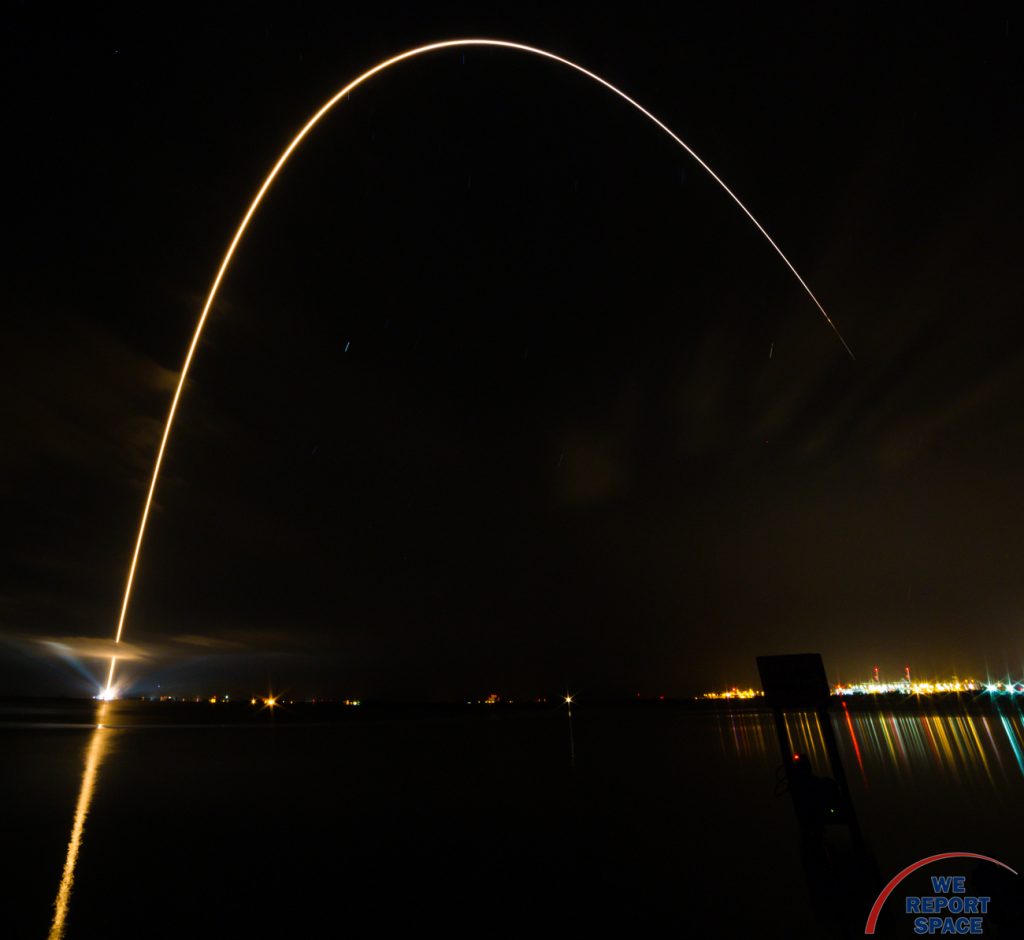
"Everything matters. When you see a successful launch, what I think of that team - everybody has to do their part. When the rocket takes off, 12 bolts have to be cut within a few milliseconds. For that to happen, a number of technicians, a number of engineers are designing a system that has to work in the first 10 to 20 milliseconds of the launch. When you talk through the entire launch story, you realize that it is an amazing team."
About the Third Stage
The third stage is a Star48 third stage developed by Northrop Grumman. Phil Joyce, VP for Small Space Launch from Northrop Grumman: "This is the first time a Delta IV Heavy has ever flown with a 3rd stage, but the STAR family of rocket motors has been used in over 2,500 missions. When asked him if it was unusual to refer to the STAR48 as a third stage, and he said it's more often used as a "kick stage" that's integrated with the spacecraft, where the spacecraft will provide avionics and flight control, and the motor has a fixed nozzle. For the Parker Solar Probe launch, Northrop Grumman launched a development program to set up a STAR48 motor with its on avionics and control authority, so this one is flying with it's own flight computer and a vectorable nozzle, making it an autonomous stage rather than a component of the probe spacecraft. Having developed this motor, they're planning on offering it to other customers, particularly focusing on providing it for interplanetary missions. Although the third stage burns for just 91 seconds, it is responsible for nearly 2/3 of the velocity of the Parker Solar Probe.
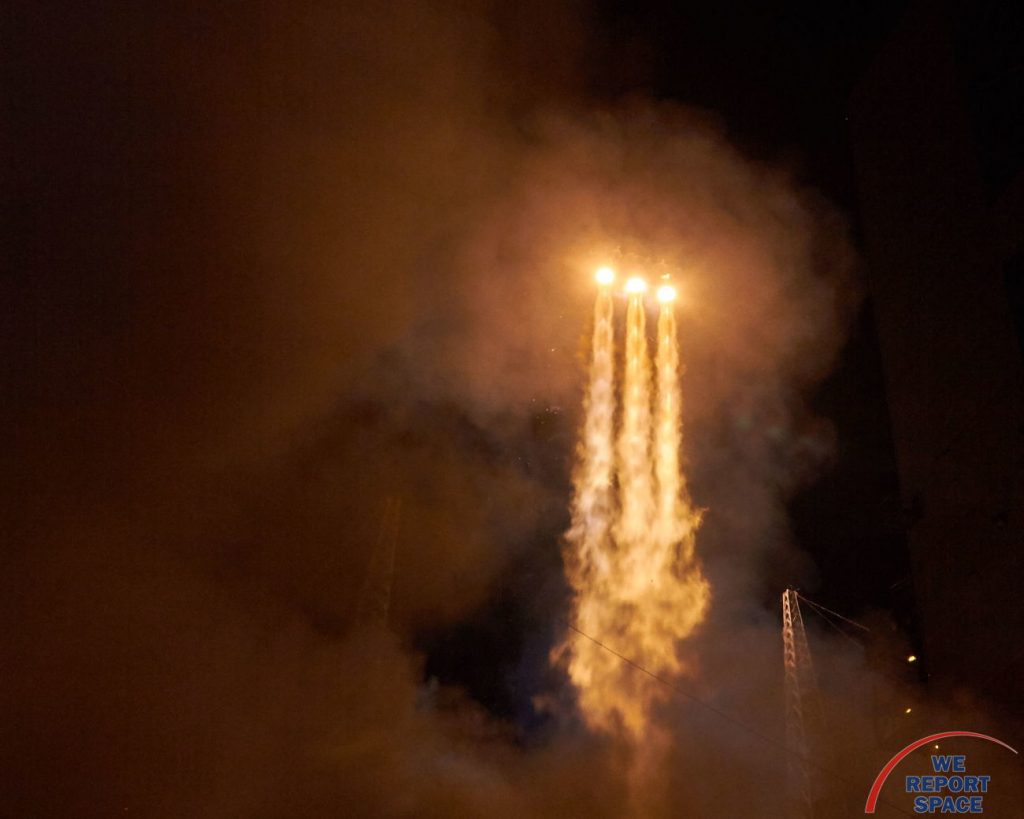
About the Delta IV Heavy
This is the 10th flight of the Delta IV Heavy. The launch vehicle was chosen because of the velocity required by the Parker Solar Probe. This mission had an unusually long first stage burn:
Events during flight:
- T-0:00:07 Starboard Booster Ignition
- T-0:00:05 Center and Port Booster Ignition
- T+0:00:00 Lift-off
- T+0:03:57 Port and Starboard Booster Jettison
- T+0:05:36 Booster Engine Cutoff
- T+0:05:55 Main Engine Start (for first burn)
- T+0:06:05 Payload Faring Jettison
- T+0:10:37 Main Engine Cutoff
- T+0:22:25 Main Engine Start (second burn)
- T+0:36:39 Main Engine Cutoff
- T+0:37:09 Second Stage Separation
- T+0:37:29 Third Stage Ignition
- T+0:38:58 Third Stage Burnout
- T+0:43:18 Parker Solar Probe Separation
Photos

Stunning, full color photo book covering every east coast launch spanning 2014-2015, including the first-ever powered landing of a SpaceX Falcon 9 rocket.
More Info